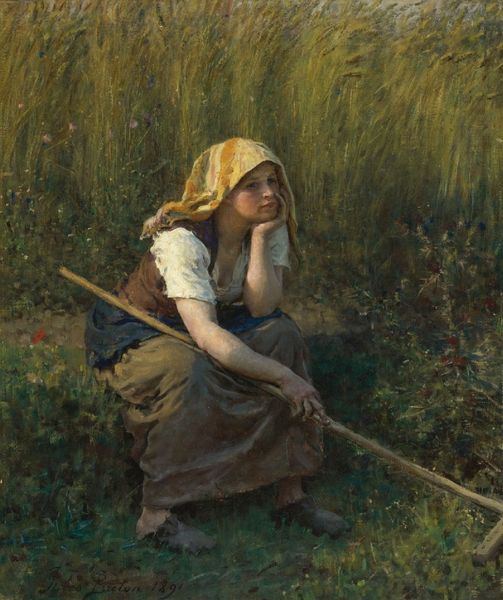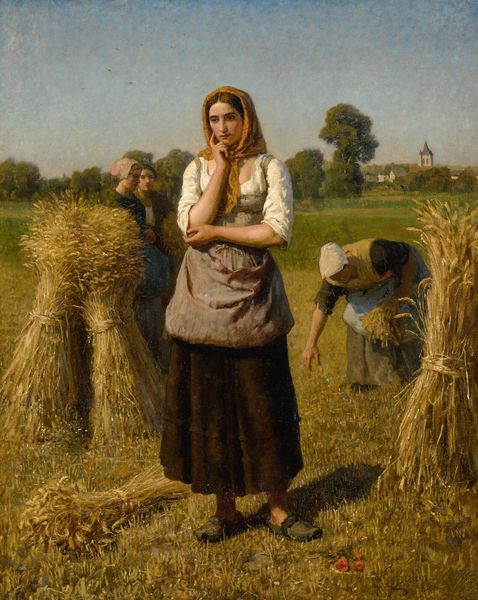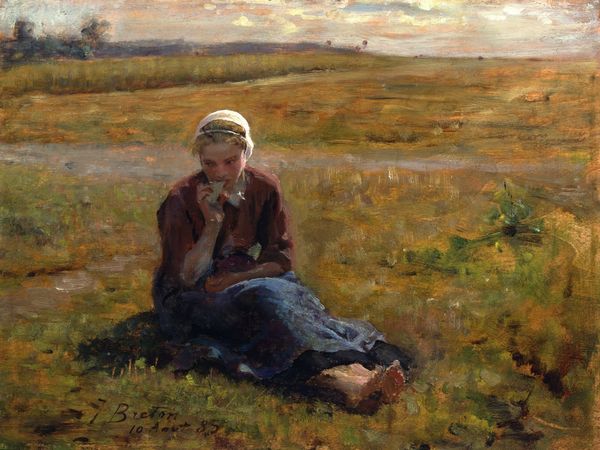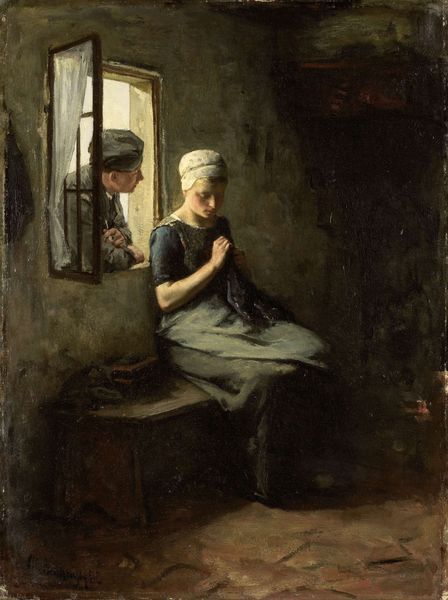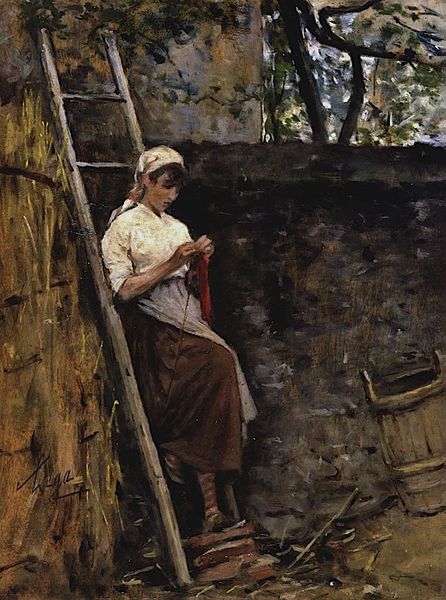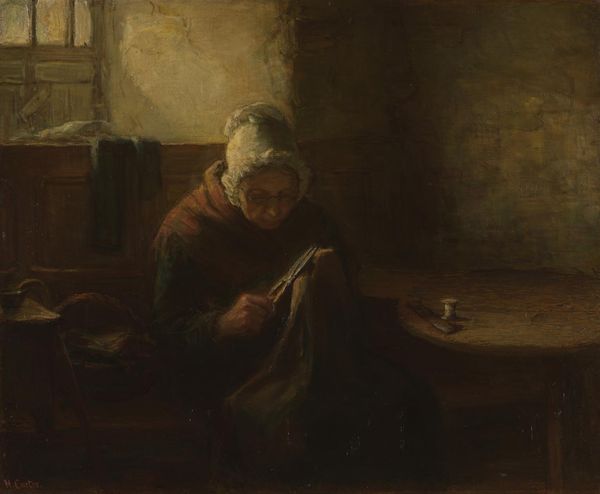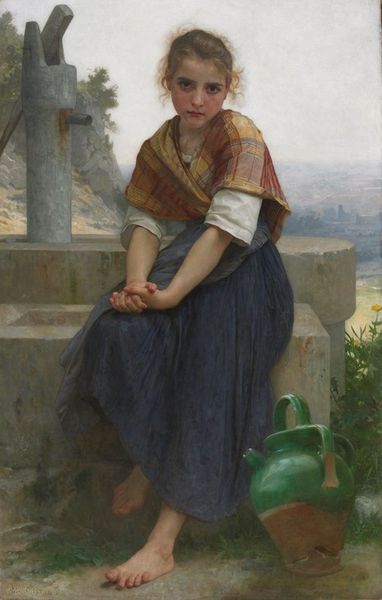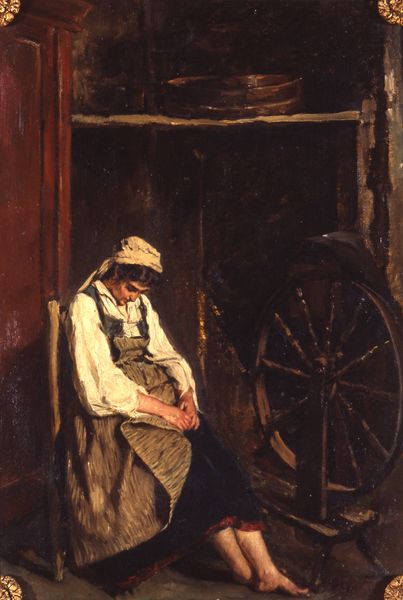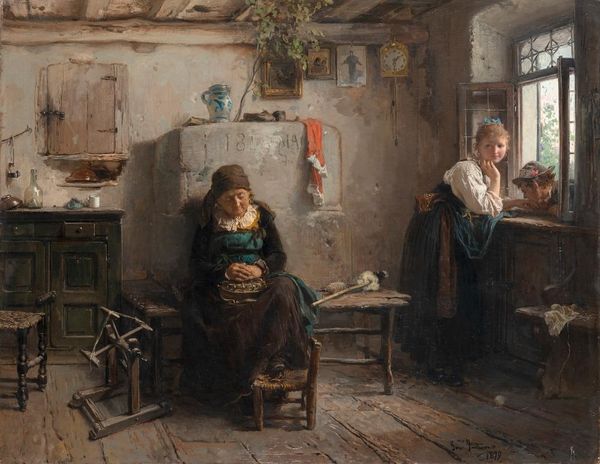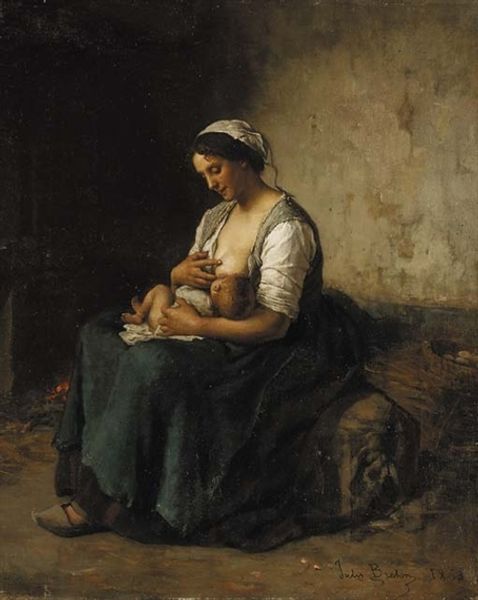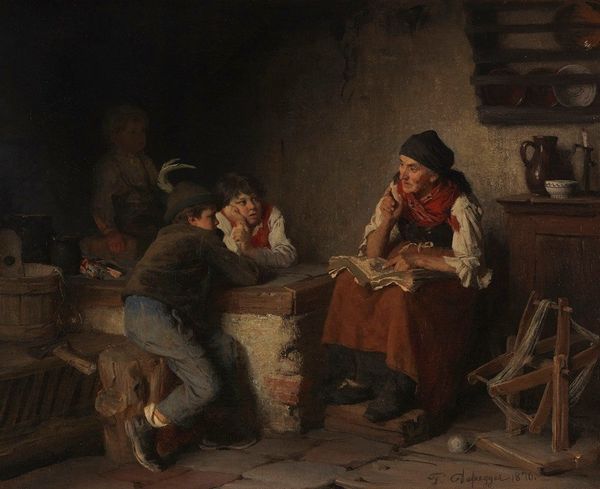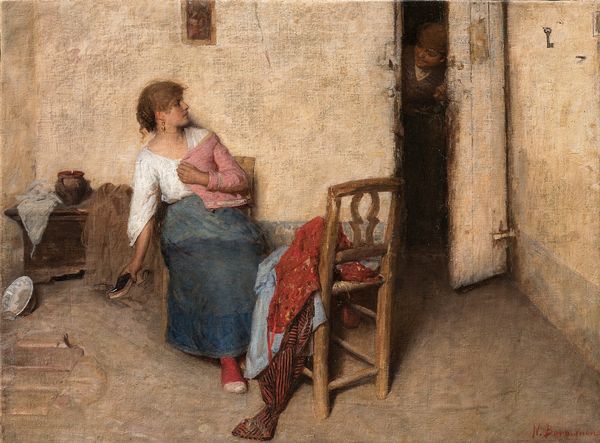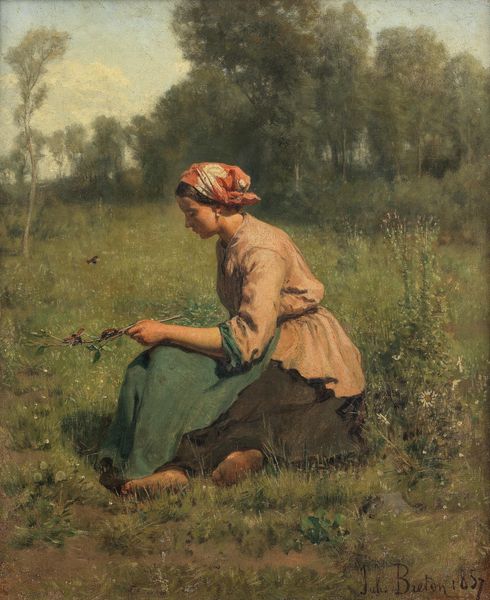
Copyright: Public domain
Jules Breton painted this scene of a peasant woman at rest in 1873, using traditional oil paints on canvas. The material qualities of the paint itself are key to understanding the work. Note the earthy, muted palette, dominated by browns, blues, and creams. Breton applied the paint with visible brushstrokes, creating a slightly rough, textured surface that evokes the harsh realities of rural life. The thick application of paint in areas like the woman's skirt gives it a sense of weight and volume, emphasizing the physical labor associated with her class. The artist's choice of subject matter is equally important. Breton elevated the everyday lives of rural laborers, depicting them with dignity and respect. This artistic decision was a conscious one, reflecting the growing social awareness of the working class during the 19th century. By focusing on the materials, process, and social context of this painting, we can appreciate the way Breton challenged the traditional art world's focus on idealized subjects, and instead honored the lives of ordinary people.
Comments
No comments
Be the first to comment and join the conversation on the ultimate creative platform.
